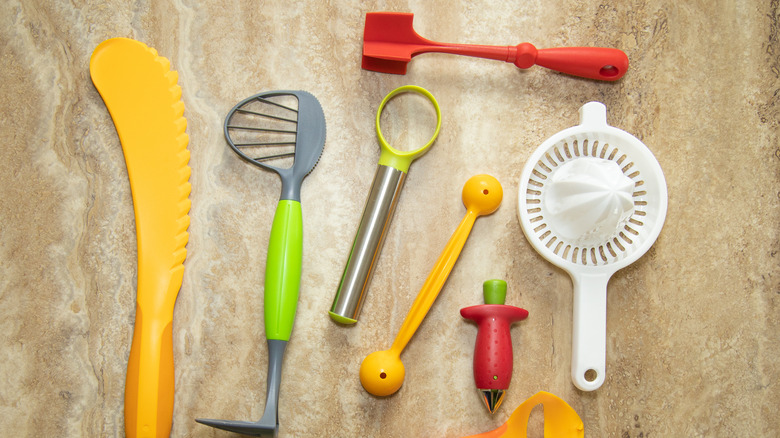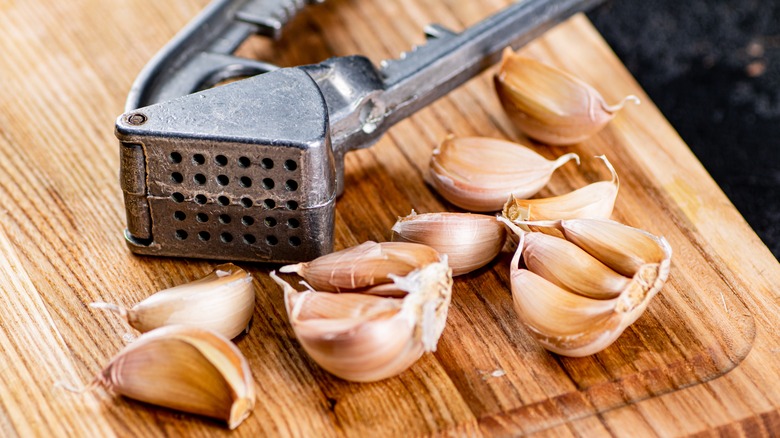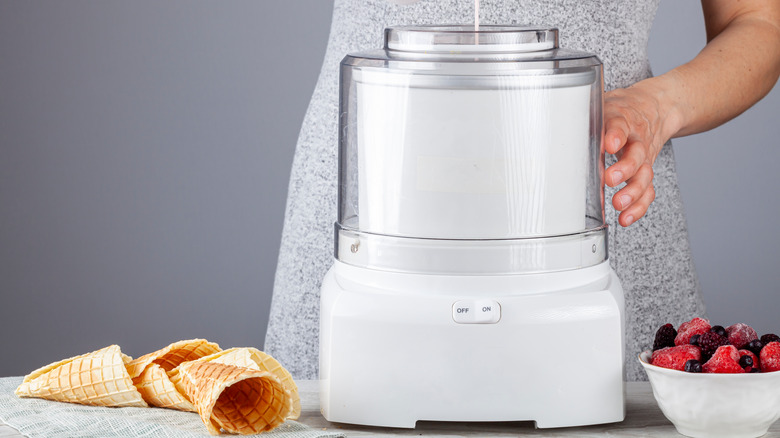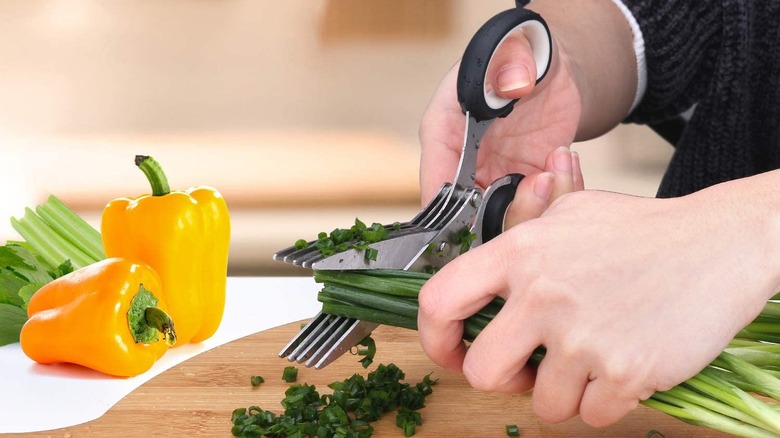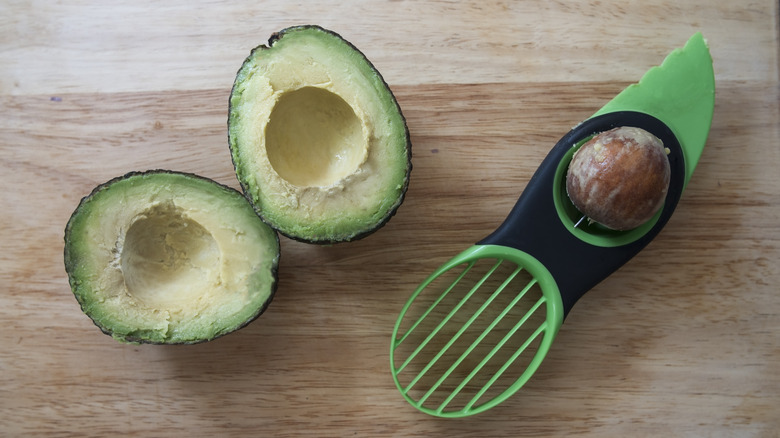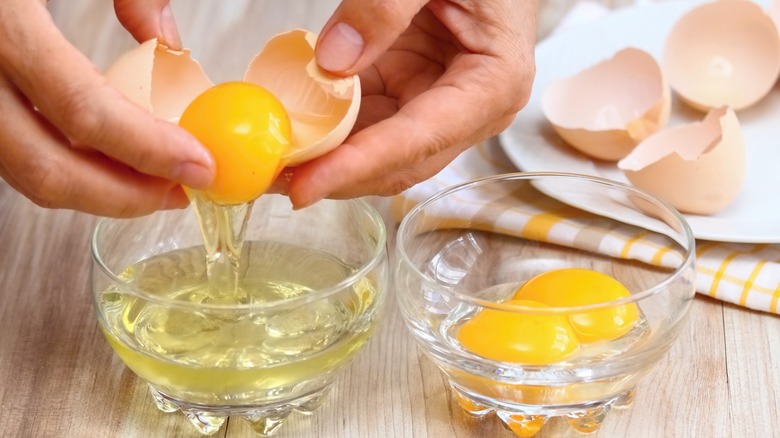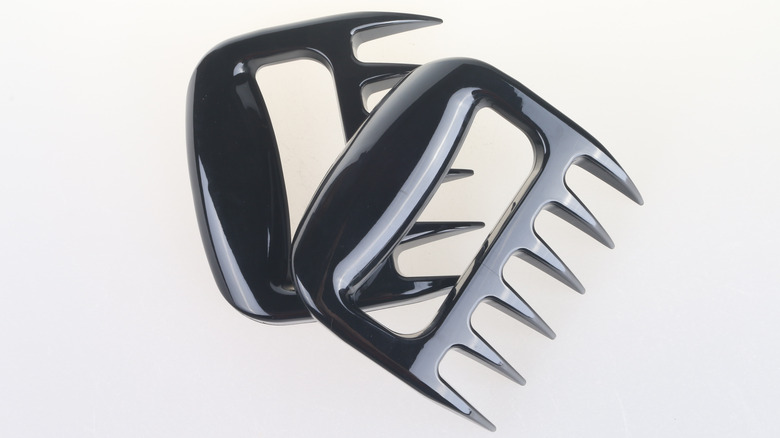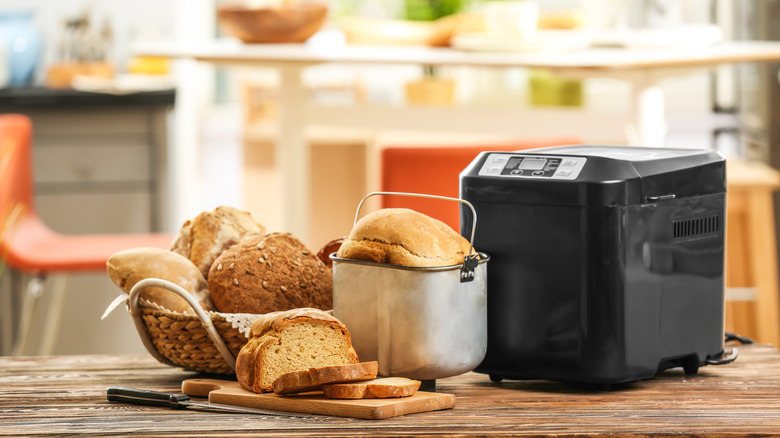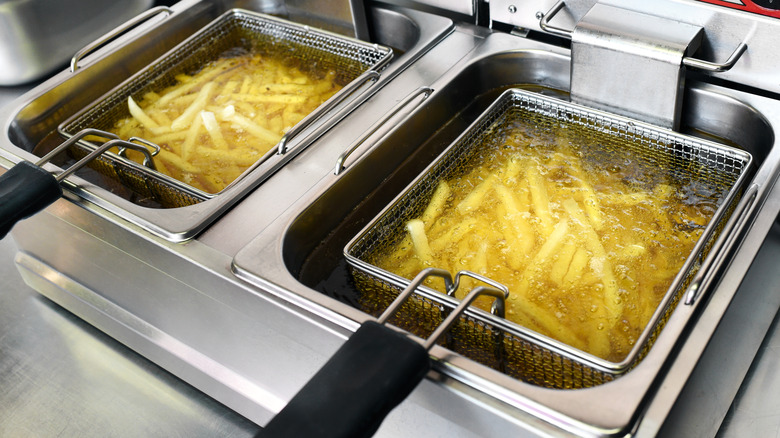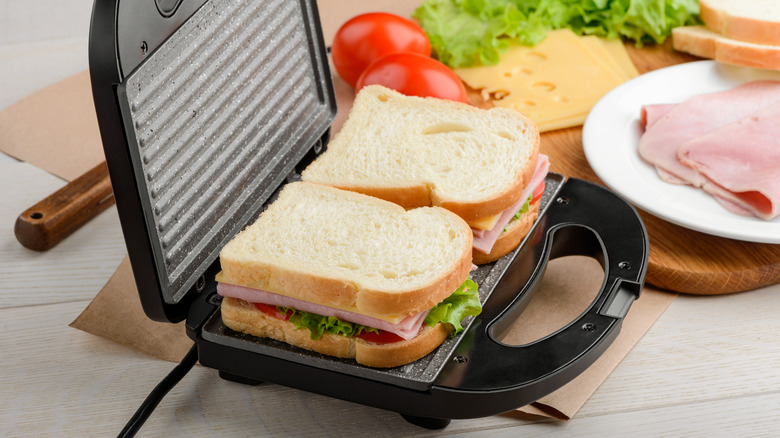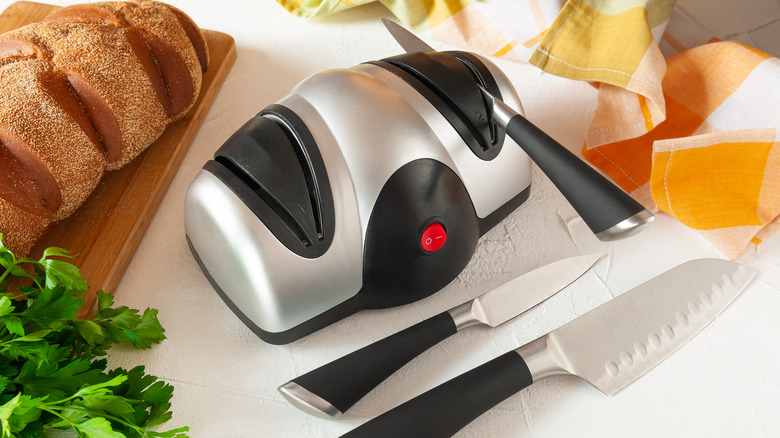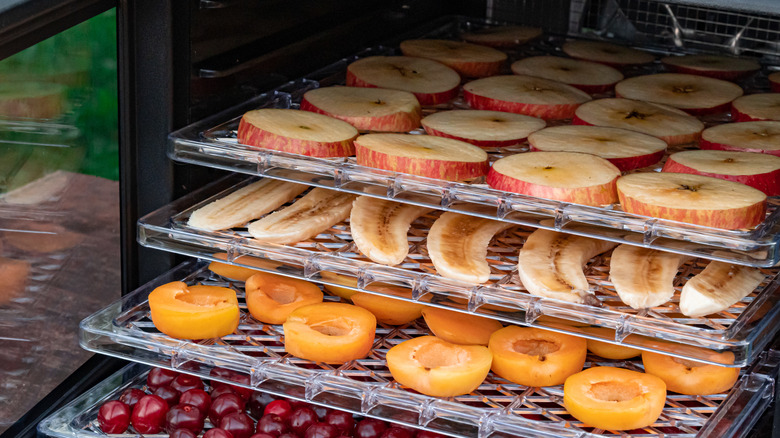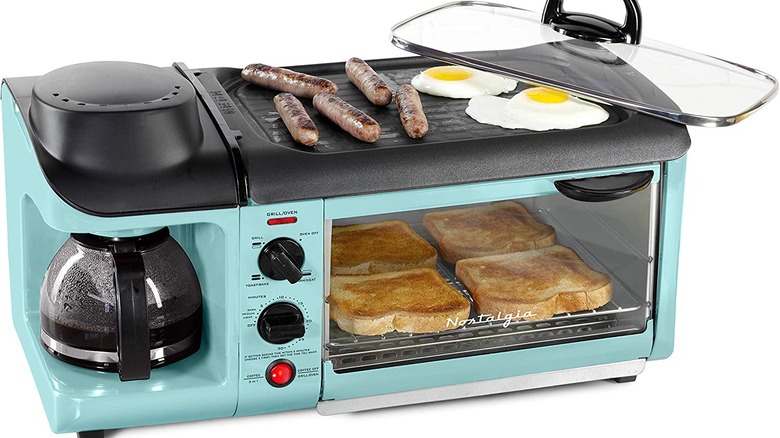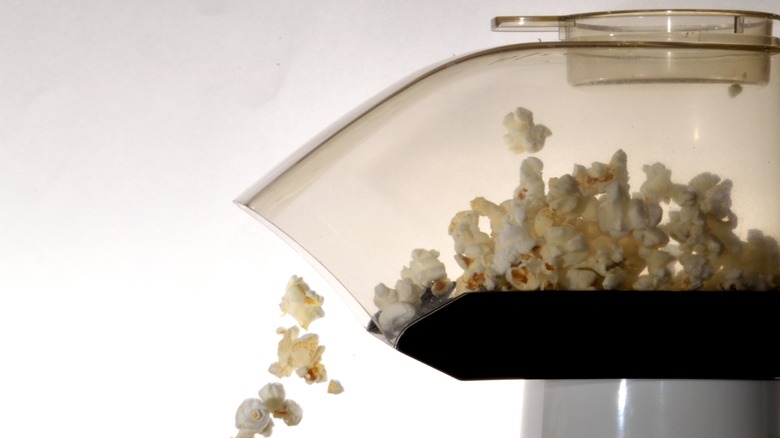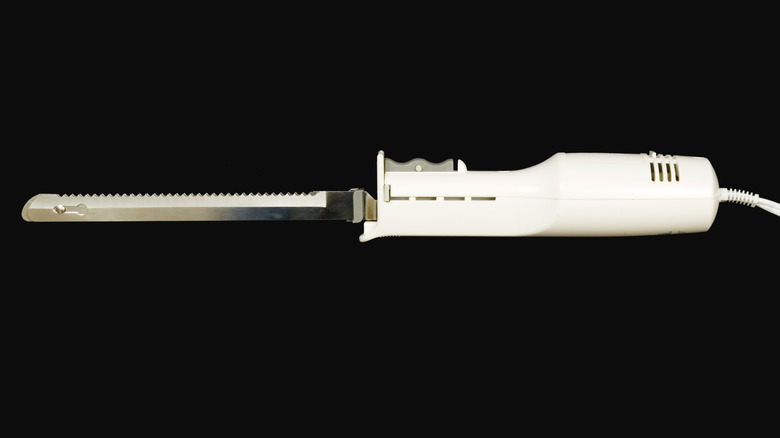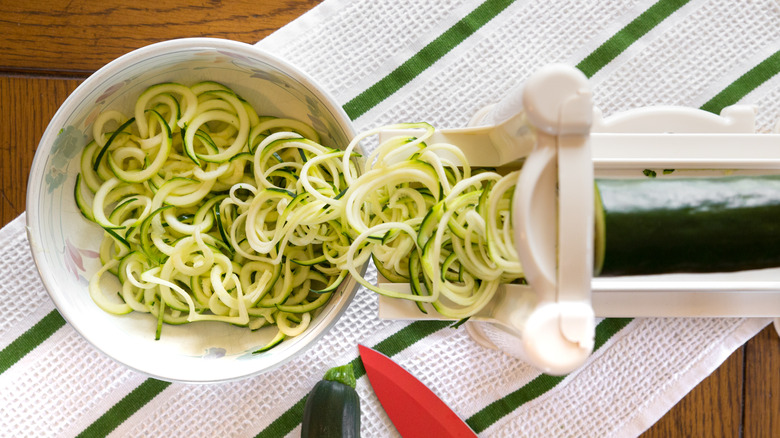15 Kitchen Tools You Shouldn't Waste Your Money On
There are dozens of different kitchen tools, but they all fall broadly into two categories: multitaskers (devices that can perform multiple tasks, like Dutch ovens and stand mixers) and unitaskers (one-use gadgets that can only accomplish what they're designed for). While celebrity chefs like Alton Brown have famously spoken out about unitaskers (via NPR), we do recognize that there are some unitaskers that are absolutely worth it. A citrus juicer may only be able to juice lemons and limes, but it makes quick work of it while keeping your hands clean. And a salad spinner may take up a lot of room in your kitchen, but using one is truly the best way to remove excess water from a head of lettuce.
On the other hand, there's a slew of kitchen tools you shouldn't waste your money on. These tools provide solutions for problems that aren't that time-consuming or perform tasks that can easily be accomplished by another tool.
Garlic press
While many swear by the garlic press as a time-saving mechanism, we know plenty of ways to mince garlic without one of these gadgets. This hand-held tool has two hinged handles that work together to put pressure on the clove placed in the middle. When pressed through the grid, the clove transforms into a pile of minced garlic, or that's the idea anyway. What actually happens is the garlic turns to mush, mincing the clove far finer than is possible with a knife. This leads to one of the biggest mistakes you can make when cooking with garlic: The resulting garlic mush can burn easily and will unintentionally infuse whatever you're cooking with extra-garlicky flavor.
The late Anthony Bordain expressed his hatred for the garlic press in his 2000 book Kitchen Confidential. In the chapter about how to cook like the pros, Bordain rants about how garlic is "divine" when treated properly, but "disgusting" when it's not treated with respect. When talking about the garlic press, he specifically refers to it as an abomination, "I don't know what that junk is that squeezes out the end of those things, but it ain't garlic."
Bourdain suggests smashing garlic with the flat end of the knife blade or slivering it instead of mincing it. If it must be finely minced, try using a fork instead of cluttering up your kitchen drawers with another single-use kitchen tool.
Ice cream machine
Don't get us wrong — we like store-bought ice cream, but do recognize there's real culinary power in knowing how to turn a simple custard recipe into an untold number of ice cream flavors. It allows you to take advantage of the berries at the farmers market or have a little fun with boozy concoctions for your next dinner party (we're looking at you, Ina Garten's Grand Marnier-infused peach ice cream).
Our love for homemade ice cream doesn't deter from the fact that ice cream makers can only do one thing, and they take up a ton of space in storage. Not only that, but they require advanced planning to use. Depending on the model, you either need to buy a 10-pound bag of ice every time you want to churn, or you have to put the bowl in the freezer 24 hours prior to use (via KitchenAid).
Luckily, there's a way to make homemade ice cream without any special appliances. Our favorite no-churn ice cream recipe uses sweetened condensed milk and whipped heavy cream. It only takes five minutes to mix the ingredients and a 12-hour rest in the freezer to make this no-equipment-necessary ice cream, saving you time and storage space.
Herb scissors
Kitchen shears are one of our favorite kitchen tools, and they're so valuable that Alton Brown once tweeted that "a good pair of kitchen shears is worth 7.3 knives." You can use them to do everything from spatchcocking a chicken for a quick weeknight dinner to cutting herbs without breaking out the cutting board.
Single-use scissors like herb scissors, on the other hand, simply don't make the cut. These specialty scissors cram five blades between the two handles to "equal 10 knife chops," (via Amazon). That sounds great, however, reviewers point out a few problems. One reviewer commented that the scissors won't cut moist materials, and the herbs fold up between the blades and don't get cut. Several commented that the blades weren't sharp enough to cut through herbs and that they rusted after several uses. Since the blades don't come apart like a good pair of shears, the water gets trapped in the scissors and rusts the blades.
Put it all together, and we can see why a specific pair of scissors might be a waste of money. Better to trust in a sharp knife or a sturdy pair of shears that can be sharpened when they dull over time.
Avocado slicer
Cooking can be hazardous, and between sharp knife blades and open flames, it's easy to get hurt. Avocados can be slippery and hard to cut, and they become extremely mushy when overripe. OSF HealthCare reports that nearly 9,000 people go to the hospital each year with "avocado hand" — the unfortunate aftermath of using a knife to pierce an avocado pit, but missing and plunging the blade into your hand instead. So it's no wonder that companies have created a kitchen tool to help people avoid knife-related injuries.
While there are several different versions of the avocado slicer, they all have one thing in common: They're specifically designed to cut, pit, and slice avocados. They really only work on avocados because their "blades" are made of plastic, which are sharp enough to go through an avocado peel, but not many other fruits or vegetables. While reviews indicate that they do actually work for removing an avocado pit without cutting into your hand, there are other avocado pit removal hacks that don't require cluttering up the gadget drawer.
If you're not comfortable using a knife, try scooping the pit out with a spoon. Small spoons with pointy tips work the best, but large soup spoons will work in a pinch. You can also remove an avocado pit using just your hands by placing your index and middle fingers around the pit and pushing the pit firmly from the back with your thumb.
Egg separator
Eggs are one of our favorite ingredients because of their versatility. Scramble, poach, or hard-boil them for breakfast, add them to meatballs and meatloaf as a binding ingredient, or use them to leaven and give rise to baked goods. When baking with eggs, it's always a good idea to separate the egg whites from the yolks, whipping them into an airy concoction that adds a light, fluffy texture to the finished dessert.
It can be tricky to separate the egg whites from the yolks, though. Using two eggshells makes it easy to accidentally pierce the yolk with the shell's sharp edges, causing the yellow substance to bleed into the whites. That doesn't mean you need to spend money on a gadget specifically designed to separate the two, though.
The best egg-separating method starts with using cold eggs, which helps the yolks hold their shape and create a clean separation. From there, you have a few choices. If you don't mind getting your hands dirty, crack the egg into a bowl before pouring the contents over your hand, allowing the white to run through your fingers into a separate bowl. You can also use a clean plastic water bottle as a clever trick for separating egg yolks. Simply squeeze the bottle and place it over the yolk, creating a vacuum that sucks the yolk right up.
Shredder claws / meat paws
Shredder claws (also called meat paws) are exactly what they sound like: Handheld "claws" made of stainless steel or plastic that are designed to go over your hands when shredding meat. Now we're not saying you should throw them away if you happen to buy a BBQ tool set that comes with shredding claws. There's certainly something kind of cool about pretending to be a bear while you're tearing into a perfectly cooked pork shoulder, transforming the large roast into a pile of pulled pork. That said, we can't think of a single reason why you should go out of your way to purchase a set of these claws.
It's just as easy to shred beef, pork, or chicken using a pair of standard forks. Simply place the forks into the meat and pull in opposite directions to remove long, shredded pieces of meat, repeating the process until the entire roast is shredded. You can also use a potato masher, pressing down on the meat and using a pair of tongs to pull out the exposed strands. If the meat is cool enough and cooked properly, you won't need any tools at all and you can pull the meat apart with your fingers. All of these methods involve a little elbow grease and getting your hands dirty, but the shredder claws won't get the job done any more cleanly or easily.
Bread machine
Bread machines have certainly had their time and place in history. According to Taste, the all-in-one bread machine debuted in Japan in 1986. It promised an easier way to make bread: Pour the ingredients into the machine, push a button, and walk away as the gadget mixes, proofs, and bakes a perfect loaf of bread. By 1999, there was a bread machine in one in five American households.
While a dedicated bread machine may have high appeal for someone who bakes bread every day, it's probably a waste of money for the casual bread enthusiast. These machines do provide bread-making convenience, but they're large and take up valuable counter space. You can't use the machine to make different bread shapes, either, like round rustic boules or baguettes, as they're only designed to make loaf-shaped bread (via Salad in a Jar).
Instead, if you want to make fabulous bread, avoid one of the top bread-baking mistakes and knead your dough by hand. By skipping the bread maker or stand mixer, you'll be able to feel the dough as you work, getting it to the perfect consistency without accidentally over or under-kneading it.
Deep fryer
Americans love fried food, from French fries to fried chicken. According to Statista, nearly 178.98 million Americans consumed frozen fried chicken in 2020. That's over half of Americans considering that the U.S. Census counted 331.4 million people in the same year! So it would follow that a deep fryer should be a common appliance in most households, but we classify it as a kitchen tool you shouldn't waste your money on.
We do like that a good deep fryer has precise temperature settings, allowing you to use a set-it-and-forget-it mentality when frying chicken. That said, how often do you actually plan to fry food at home? If you're a casual deep fryer, it's just as easy to manage oil temperature in a Dutch oven or wok by using a probe thermometer that clips onto the side of the pot (via ThermoBlog). You may find that you're ready to ditch all the excess oil anyway, using an air fryer to crisp up your food to a golden-brown perfection instead.
Panini press
Panini presses like the George Foreman grill have certainly had their time in the spotlight over the years. These indoor grills are designed to sit on the countertop and cook food from both sides at once. Perhaps what made the "Lean Mean Fat Grilling Machine" so popular was its griddle's angled pitch, which allowed grease to drain away from the food. The unit sold over 100 million units in the late 1990s and early 2000s (via Lemelson Center for the Study of Invention and Innovation).
While many of us can remember having a panini press at one point or another, it's not a tool you really need to have in your kitchen. It doesn't add much convenience to the cooking process since it's just as easy to make grilled cheese or other panini-style sandwiches in a cast iron pan. If you want to get the true panini experience, you can heat two cast iron pans and heat the sandwich from both sides at once. When the pans are preheated, place the sandwich in the first skillet and wipe the bottom of the second pan with a lightly oiled paper towel. Place it on the sandwich and cook until both sides are golden brown and crispy.
Electric knife sharpener
The University of Rochester Medical Center says that thousands of people end up in the emergency room each year with kitchen knife-related injuries, and dull blades certainly contribute to those injuries. Sharp knives tend to "bite" into the cutting surface, slicing cleanly through meat and vegetables. Dull blades, on the other hand, require significantly more pressure to get through the same surface. If you slip with a dull blade, you'll find that knife brings a lot of force along with it!
It's important to sharpen your knives every few months, but what's the best tool to use to do it? Alton Brown told Gizmodo that he would only use an electric knife sharpener if he had knives that he hated, "There's not a good [electric knife sharpener] made. I like my knives and use them too much to use a sharpener — maybe I'd use it on garden tools."
Instead, you should use a honing steel to keep your knives tuned between sharpening sessions, and Iron Chef Masaharu Morimoto recommends using a whetstone when the blade needs to be sharpened. You can also turn to the professionals to give the blade back its original edge, something you might want to consider doing every few years.
Food dehydrator
If you're into food preservation, you might be tempted to pick up a food dehydrator. These machines are basically countertop, low-temperature ovens with a circulating fan that creates the proper environment for removing moisture from foods. While you can use a dehydrator to dry almost anything, from fruits and vegetables to meats (like homemade jerky), owning one is probably a waste of money if you don't plan to use it regularly.
According to Dehydrator Lab, there are several ways to dehydrate foods without a dehydrator. You can use your regular oven set to its lowest setting (180 F if that's an option, or 200 F if that's the lowest it goes). A toaster oven is a better option if you have one since they tend to allow lower temperature settings. Some foods (like herbs and peppers) don't need a dehydrator at all; simply hang them in a warm spot with good airflow and let nature take its course.
Breakfast stations
If you're feeling nostalgic for a 1950s or 1960s-style breakfast diner, the at-home breakfast station will provide a blast of the past. Most breakfast station brands even have a color scheme to invoke sentimentality, boasting the teal and pink aesthetic of this time period. While these three-in-one machines might even seem functional — combining a toaster oven with a coffee maker and a griddle in one convenient package — they're actually a waste of money.
With so many moving parts, it's easy for these machines to break down. Several Amazon reviewers shared that the griddle doesn't work as well as they hoped, the toaster takes too long to be useful, and the griddle is sloped so it drips raw egg into the toaster oven. One reviewer shared that they "can't help but feel like I would have been better off just buying them separately and storing them away between uses." Our verdict: You're better off buying these components separately, especially if you're looking for a good griddle.
Popcorn popper
The first popcorn machine was invented in 1890 by a Chicago candy store owner who was trying to improve his peanut-roasting machine (via History). The treat was originally distributed to popcorn lovers via horse-drawn buggies until it became a staple at movie theaters and state fairs. It wasn't until the 1970s that popcorn became a household staple when the microwave bag was invented. The air popper also came out in the same decade, a device that used hot air instead of oil to pop kernels, making it possible to make movie-theater-style popcorn at home (via America's Favorite Gourmet Popcorn).
While you might be tempted to pick up an air popper to satisfy your popcorn cravings, you should probably think twice. When comparing air poppers to other popcorn-making efforts (like on the stovetop or in the microwave), the New York Times Wirecutter found that air poppers were one of the only methods that popped nearly all the kernels without creating burnt pieces. However, they take up valuable counter space and the stovetop method actually created crunchier popcorn.
Electric carving knife
Chances are good you've been to a Thanksgiving, Christmas, or Easter dinner where the host broke out an electric carving knife. This electric-powered knife was patented in 1964 by the late Jerome Murray, who also held 74 other patents for inventions such as the peristaltic pump for open-heart surgery (via HomeSteady). It promised to bring convenience to the home cook by pairing two serrated blades together. When the power is switched on, the side-by-side blades effortlessly slice through meat, creating perfect slices with minimal exertion.
Although these electric blades are convenient, we don't actually recommend using an electric knife on a roast turkey. They're difficult to clean, which means bacteria or rust can develop on the tight spaces between the blades. Not only that, but these knives are also extremely loud, so they're not ideal for table-side carving anyway. Finally, you'll likely only use it a few times a year on select holiday roasts, so it's really not worth shelling out the expense and finding somewhere to store it for the rest of the year. It's much better to use a regular carving knife that you can use year-round without splitting your eardrums.
Spiralizer
It's no surprise that the spiralizer gained popularity with the rise of gluten-free and low-carb diets like the ketogenic diet. This machine allows you to move vegetables like potatoes or zucchini through different blade attachments, turning them into a healthy heap of fake noodles. The headlines were filled with praise for the spiralizer when it became popular in 2014: Good Housekeeping called it the "Holy Grail for low carb-dieters," and the Miami New Times called it the "best kitchen gadget you've never heard of."
But do you actually need one? Even if you're skipping pasta, it's easy to create vegetable noodles without this hard-to-clean gadget. You can use a skewer and a sharp knife to create curly fries without a spiralizer or use a regular vegetable peeler or mandoline for similar results. They won't turn out quite as curly and perfect as a spiralizer, but you also don't have to find a place to store the gargantuan gadget.
